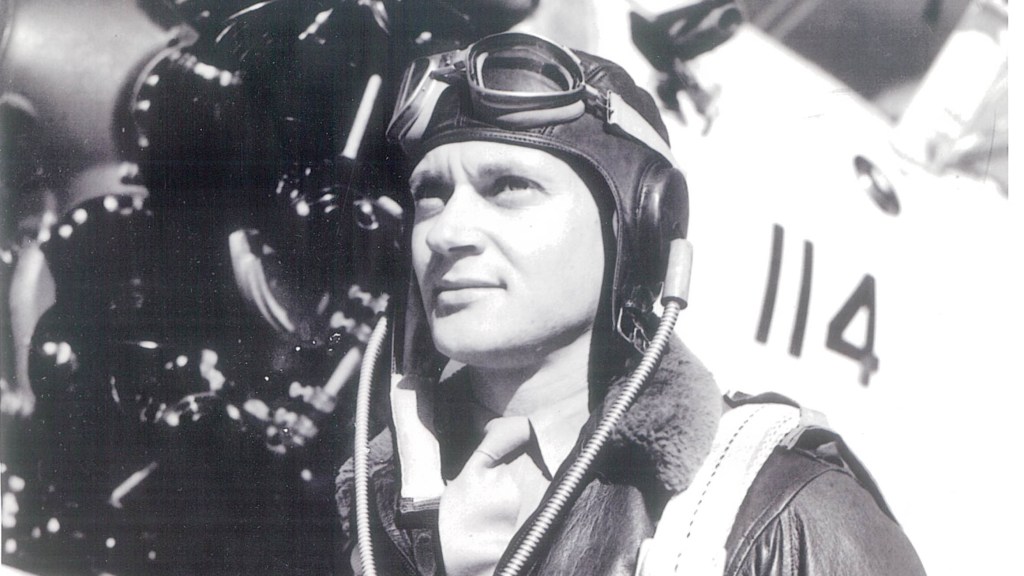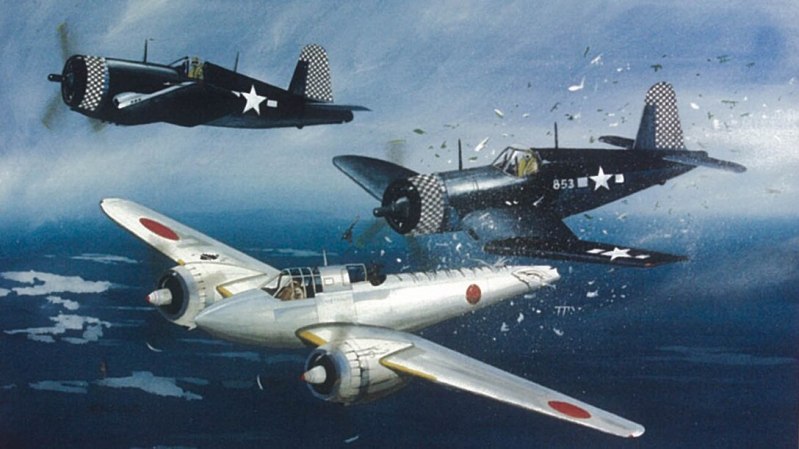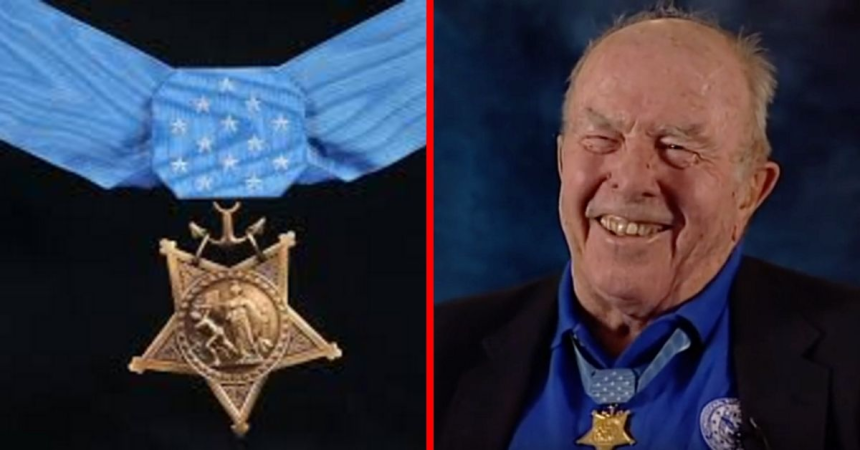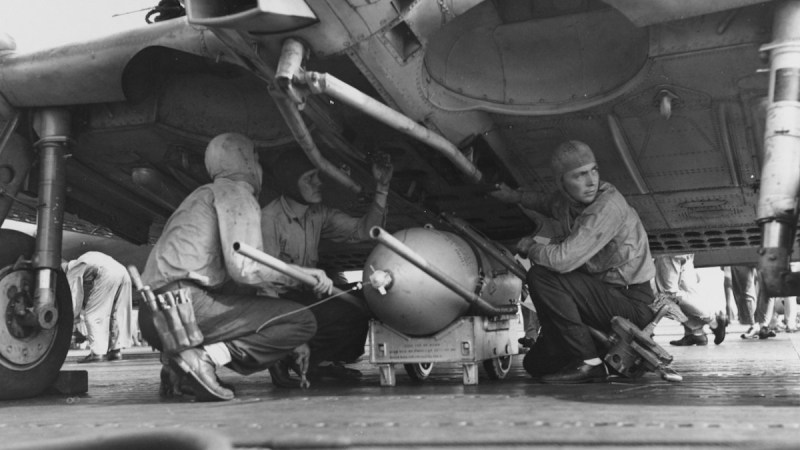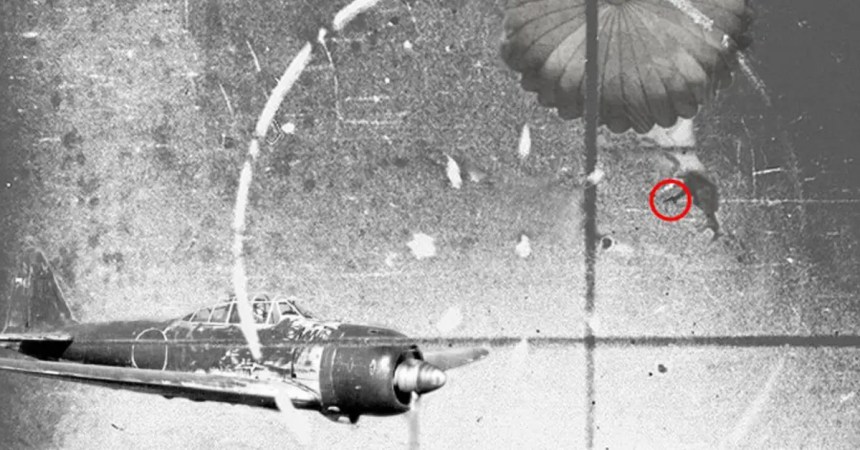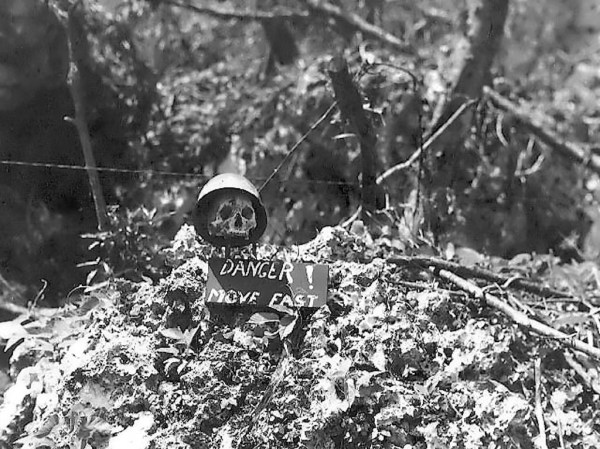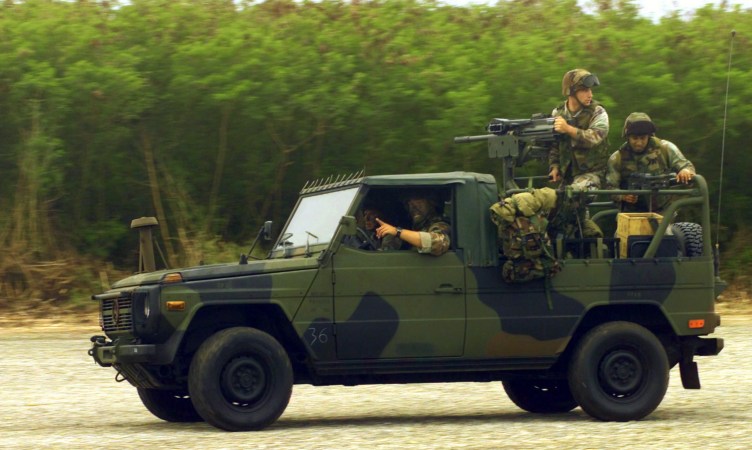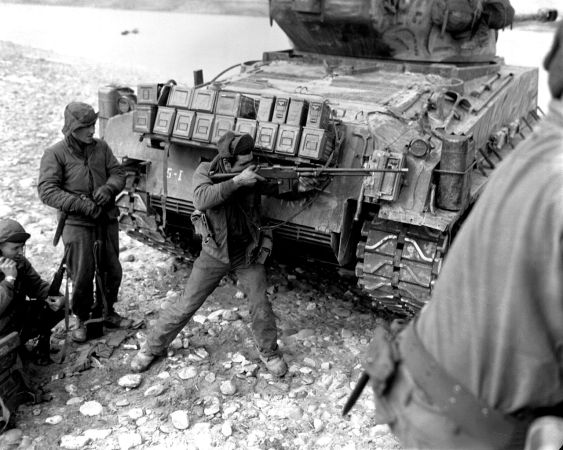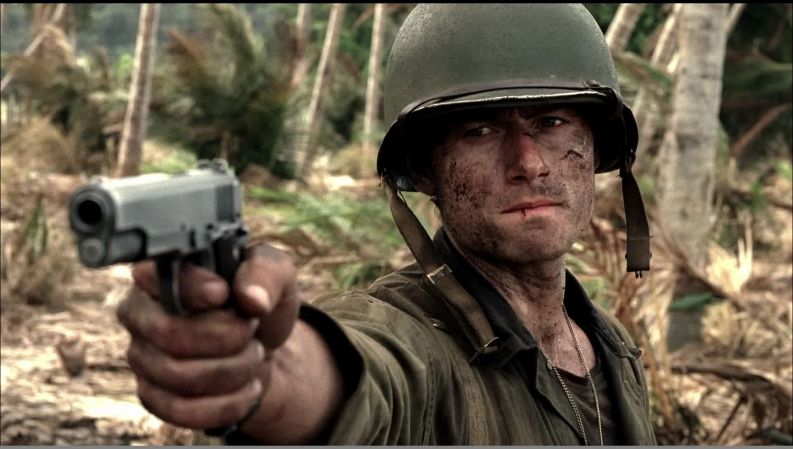Marine Corps pilot Robert Klingman got an early start to his military life. He grew up in Depression-Era Oklahoma, one in a series of nine children. Since work was hard to find, Klingman’s parents sent teenage Robert to Fort Sill for the Civilian Military Training Program, so the boys would be clothed and fed by the U.S. government for a summer.
They couldn’t have known they were raising a future naval aviator and recipient of the Navy Cross. They might have suspected, considering how quickly he took to the work. He took it so well, he joined the Marine Corps in 1934 and became an expert on the Browning Automatic Rifle or BAR.
While in the Marines, Klingman sent money home to help his family. His mother never used the money so when he left the Marines in 1938, he had enough to start his own business, a burger joint he called Bob’s Burgers. The business was a hit, but Klingman soon grew bored with that life. In 1940 he received a letter from his brother who served in the Navy and enticed him to join up too.
It turned out Klingman was pretty good at Navy life too, and became an aviation mechanic. Stationed aboard the USS Tennessee, he was sent to aircraft carrier training in San Diego. He was in California when the Japanese attacked Pearl Harbor on Dec. 7, 1941. Like many sailors, he was determined to strike back and qualified for flight training. He was discharged as an enlisted sailor and became a Navy aviation cadet.

Much older than the other cadets, he had to work a little bit harder at flight school, but he passed and when faced with the choice of joining the Navy or Marine Corps, he went with his first love: the Corps. He was sent to the Marine Corps Reserve unit VMFA- 312 at Parris Island. By 1945, he finally made it to the war, arriving at the newly-captured Kadena Airfield on Okinawa.
The Battle of Okinawa had just begun a few weeks before his arrival, starting on April 1, 1945. The fight to fully secure the island would take nearly three months, so there was a lot of work for Marines like Klingman to do. While the battle on the island continued as Marines cleared caves and reinforced concrete bunkers, a naval battle raged off the coast. 20 American ships were sunk and another 157 were damaged in the first month of fighting alone.
As the U.S. forces slowly approached the Japanese Home Islands, Japanese resistance began to get more and more stiff, especially in the form of the deadly kamikaze attacks. Japan would launch more than 1,460 kamikaze attacks in the latter half of the battle. On May 10, 1945, Klingman, then a first lieutenant, took to the skies with a flight of three other aviators to intercept a Japanese reconnaissance plane.
This particular plane was flying at 35,000 feet, well above the ceiling of the F4U Corsairs flown by the Marines that day. It set the stage for Klingman to make World War II history. His flight leader, Capt. Kenneth Reusser, was able to climb to 38,000 feet by dropping his fuel tanks and firing off 2,000 rounds of ammunition. With what he had left, he was able to damage the enemy plane and slow it down before running out. Klingman also dropped his tanks and most of his ammo to reach the height.
As Klingman approached the slow-moving enemy, he tried to fire off what he had left – but his guns wouldn’t fire. Klingman wasn’t about to give up. He told his captain he was going to hit the enemy with his own plane. As the Japanese fired at his Corsair from the tail gunner position, Klingman rammed the enemy. He took some rounds from the gunner, but his propeller ground the enemy’s tail from the fuselage after three attempts.
The enemy fell apart on the way down. Klingman went into an uncontrolled dive, but managed to recover. He ran out of fuel on his way back to Kadena, but managed a deadstick landing. He was awarded the Navy Cross for his actions that day. Despite being shot down once more in the war, he lived until 2004.

